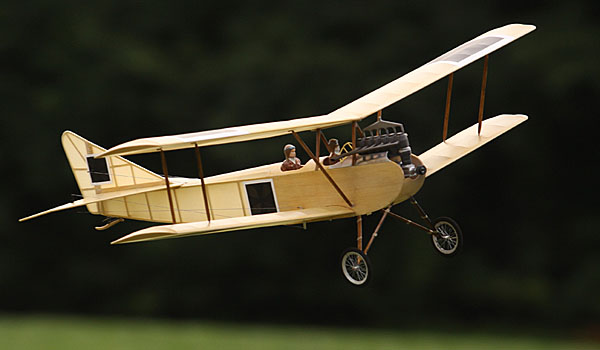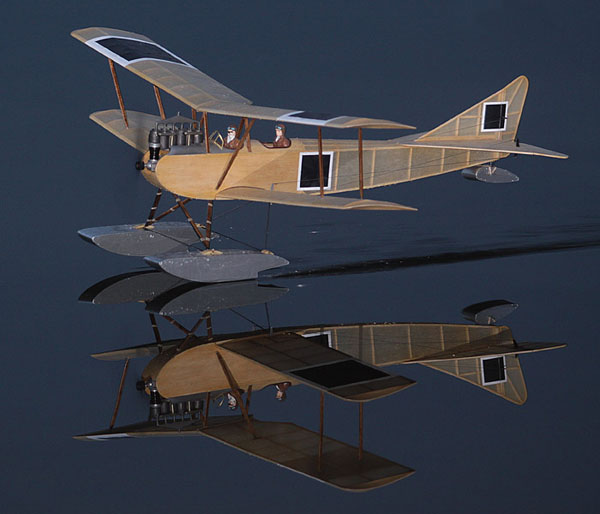Dave Johnson's Albatros B1

|
This model is based on a design drawn and built by Dave Johnson over 40 years ago, shown at the end of this page. While he is well known now for his giant scale WWI Albatros models, many don't realize that this fascination stretches back to when Dave was just 9. It was then he drew and built up his first original design, based on the two-seat observation Albatros B1. He still has the original stick and tissue model and it still looks remarkably good, despite an estimated career of well over 1000+ flights spread across nearly 30 years, and a worn out Cox engine or two. I was immediately drawn to his vintage model when I first saw it in a corner of his shop. We both decided then and there to build new ones and roughed in the plans together late that night. Dave's is similar to his first, save the color scheme, conversion to electric power and weight reduction. As I worked up and detailed the plan, and poked around on line to learn more about the B1, I decided that I wanted to mix it up a little with mine. I made a few modifications based on the research advantages of the internet and personal preferences. These included a more scale outline to the tail surfaces, a built up tail skid and removable wings. I also set up my model with pull-pull controls on the elevator and rudder and, since I already had a transverse tube running through the cockpit that joined the elevator bellcranks, incorporated a moving joystick. Simple models like this can be personalized easily and with little repercussion. Indeed, my model flies very much like Dave's new version. Both are shown below with his red original.
 My Albatros features built-up wood construction using balsa and a little plywood sourced from SIG and Balsa USA. Physically, the Albatros spans 35 inches, is almost 28 inches long and weighs about 10 ounces. The covering is Polyspan synthetic tissue applied with Balsarite and finished with SIG nitrate and butyrate dopes. I tinted the dope with pigments from my local paint store before airbrushing. The markings represent some 18 airplanes that the Germans gave to Turkey early in WWI. The Turks wanted to differentiate their new planes from those of Germany and the expedient solution was to paint over the German crosses with black squares. Yes, in the right light crosses are visible on this model. |
 |
| The floats were a quick and dirty exercise right before the NEAT Fair in 2012. They worked so well that I have yet to remove them and go back to wheels. |
 |
|
The power system features a Rimfire 250 motor with a shop-made extension shaft to reach through the dummy Cox engine. I am using whatever 2S battery between 500 and 1000mAh falls to hand first. I fly the Albatros with a Futaba transmitter, receiver and servos.
I posted a build thread on this model on RCGroups. It details quite a bit of the construction progress. Dave posted a bit more on his model as well. |
 |
|
You can also see it flying by clicking this video link.
|
| Albatros B1 | |
|---|---|
| Specs | |
| Wingspan: | 35.5 inches |
| Length: | 27.75 inches |
| Wing Area: | 372 square inches |
| On Wheels | |
| Empty Weight: | 9.7 oz |
| Flying Weight: | 11.2 oz |
| Wing Loading: | 4.34 oz/sq ft |
| Wing Cube Loading: | 2.70 |
| On Floats | |
| Empty Weight: | 10.83 oz |
| Flying Weight: | 12.37 oz |
| Wing Loading: | 4.8 oz/sq ft |
| Wing Cube Loading: | 2.98 |
|
Plans and short kits to build your own are available on the Flying Models Plans site. |
 |
Copyright 2014-2019, Thayer Syme. All rights reserved